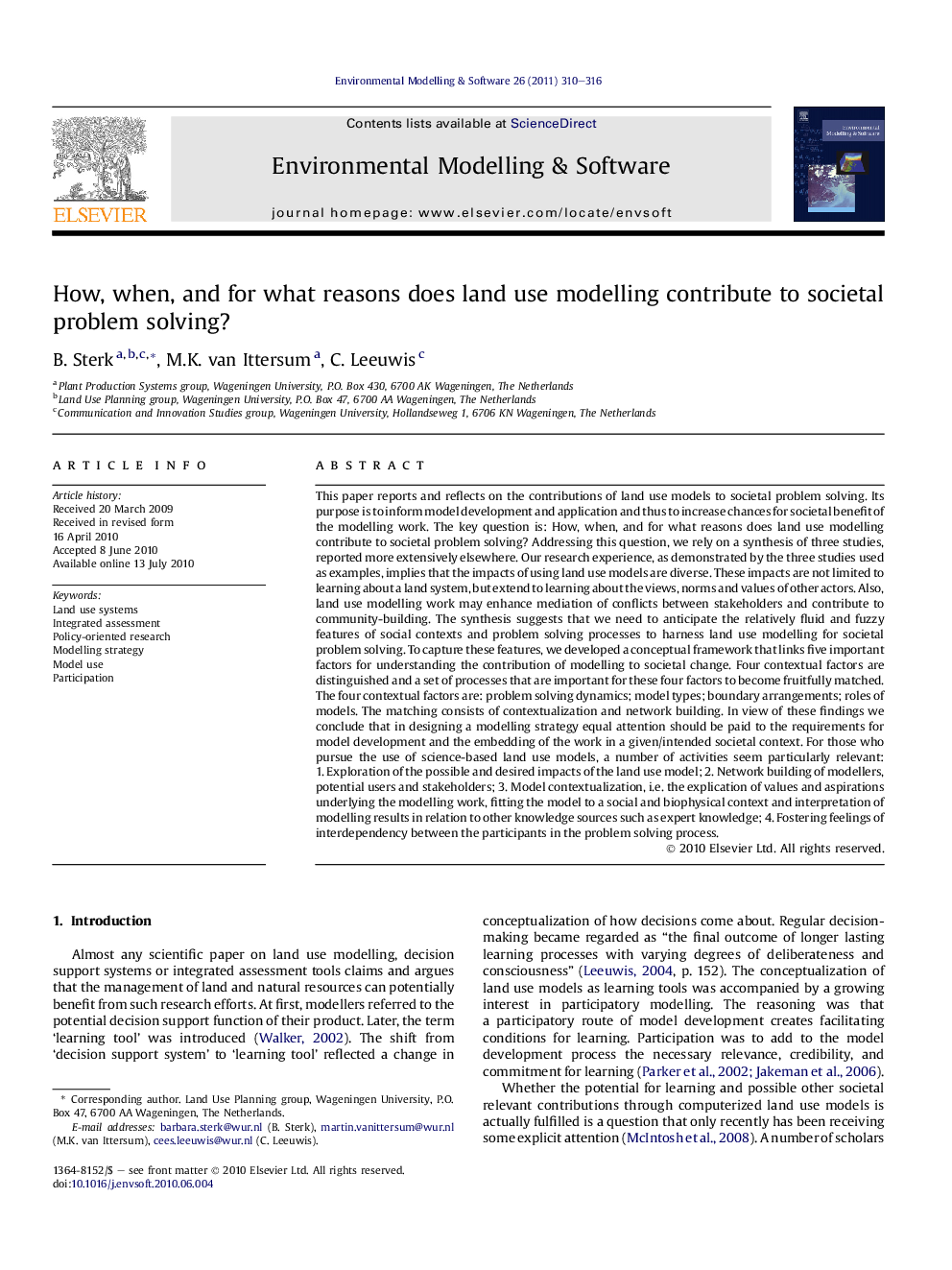| کد مقاله | کد نشریه | سال انتشار | مقاله انگلیسی | نسخه تمام متن |
|---|---|---|---|---|
| 10370896 | 876574 | 2011 | 7 صفحه PDF | دانلود رایگان |
عنوان انگلیسی مقاله ISI
How, when, and for what reasons does land use modelling contribute to societal problem solving?
دانلود مقاله + سفارش ترجمه
دانلود مقاله ISI انگلیسی
رایگان برای ایرانیان
کلمات کلیدی
موضوعات مرتبط
مهندسی و علوم پایه
مهندسی کامپیوتر
نرم افزار
پیش نمایش صفحه اول مقاله

چکیده انگلیسی
This paper reports and reflects on the contributions of land use models to societal problem solving. Its purpose is to inform model development and application and thus to increase chances for societal benefit of the modelling work. The key question is: How, when, and for what reasons does land use modelling contribute to societal problem solving? Addressing this question, we rely on a synthesis of three studies, reported more extensively elsewhere. Our research experience, as demonstrated by the three studies used as examples, implies that the impacts of using land use models are diverse. These impacts are not limited to learning about a land system, but extend to learning about the views, norms and values of other actors. Also, land use modelling work may enhance mediation of conflicts between stakeholders and contribute to community-building. The synthesis suggests that we need to anticipate the relatively fluid and fuzzy features of social contexts and problem solving processes to harness land use modelling for societal problem solving. To capture these features, we developed a conceptual framework that links five important factors for understanding the contribution of modelling to societal change. Four contextual factors are distinguished and a set of processes that are important for these four factors to become fruitfully matched. The four contextual factors are: problem solving dynamics; model types; boundary arrangements; roles of models. The matching consists of contextualization and network building. In view of these findings we conclude that in designing a modelling strategy equal attention should be paid to the requirements for model development and the embedding of the work in a given/intended societal context. For those who pursue the use of science-based land use models, a number of activities seem particularly relevant: 1. Exploration of the possible and desired impacts of the land use model; 2. Network building of modellers, potential users and stakeholders; 3. Model contextualization, i.e. the explication of values and aspirations underlying the modelling work, fitting the model to a social and biophysical context and interpretation of modelling results in relation to other knowledge sources such as expert knowledge; 4. Fostering feelings of interdependency between the participants in the problem solving process.
ناشر
Database: Elsevier - ScienceDirect (ساینس دایرکت)
Journal: Environmental Modelling & Software - Volume 26, Issue 3, March 2011, Pages 310-316
Journal: Environmental Modelling & Software - Volume 26, Issue 3, March 2011, Pages 310-316
نویسندگان
B. Sterk, M.K. van Ittersum, C. Leeuwis,